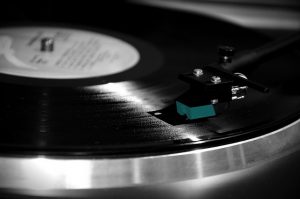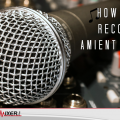
The digital age for listening to music is here among us and vinyl records are a thing of the past. However, many music collectors, DJs and others, still purchase and use vinyl records today. Covering the history of the vinyl record, there are many interesting facts to learn. Technology continues to change the way we download, store and listen, to music. It is hard to believe just how much that entire concept of music has evolved. Technological breakthroughs continue to push the music industry towards unimaginable frontiers. Still, while we embrace the future, we must also pay homage to the past which brought us to this point.
The Beginning Of The Vinyl Record
The very first flat disc record was invented by Emile Berliner back in 1888. Made out of vulcanised rubber, they were between 12.5 cm and 18 cm in diameter. A few years later, Berliner used a mixture of shellac to produce an even harder surface to make vinyl records. From this discovery is how the 78 rpm disc were developed. As the years went by, between 1900 and 1960, the disc remained about 25 cm or 30 cm. They also only gave about 2 and 5 minutes of total playing time on each side.
Since most of the phonographs used for listening to music were made of the abrasive shellac compound, there was a lot of noise when played.
Love vinyl records? Then check out these Step by Step Guide on How to Become a DJ
The Rebirth Of The Vinyl
In 1948, Columbia Records developed the 30 cm vinyl record. This was what we come to know as the LP (Long Playing record) today. Rotating at 33 rpm, the LP gave about 20 to 30 minutes of playing time on each side. It was from here on, that shellac was no longer used and instead, vinyl was used. RCA produced the 45 rpm disc a year later and it gave about 3 minutes of playing time on each side. The discs were 18 cm in diameter. These miniature versions of the LP’s, became ideal uses for juke boxes and record companies.
As the years went, by, new developments were introduced to make the vinyl records even better. Quadraphonic vinyl records became available in 1972. This was around the time when 8-track tape cartridges were also introduced to the market. Still, the lack of comparability between the other three formats (SQ, QS and CD-4) led to the commercial failure of the quadraphonic LP vinyl records.
Having a bash? Then check out these Tips On How To Throw a Great Party
The Vinyl Record Comeback
The music industry has advanced so much and people are able to stream and listen to music in so many ways now. Most would think that the vinyl record would be obsolete or dead. However, that is not the case. Truth is that vinyl record sales have been increasing the past few years. In 2008, 1.9 million vinyl record units were sold. The numbers show that 2.5 million units were sold in 2009 and 2.8 million in 2010. It is easy to see that the vinyl record sales continue, and will continue, to keep climbing. There are various reasons as to why some people continue to buy and use vinyl records to listen to music. Most music aficionados love the sound quality you get from vinyl records. They also love the surface noise which brings to life the vinyl experience from the needle crackling along the record grooves. Add the collectivity, value and nostalgia factor to that list as well. Judging by the increase in sales of many classic LP’s, it appears that the vinyl record is here to stay for now.




